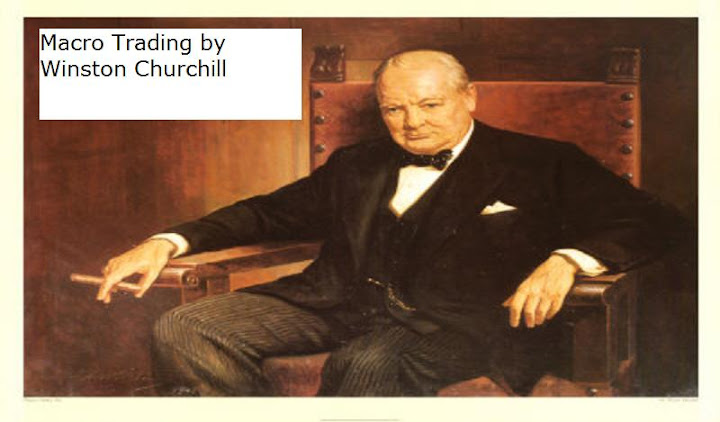Steen's Chronicle
Less QE and more radio silence please Mr. Bernanke
26 August 2011
When talking about the impact from Quantitative Easing (QE) one has to realise that most academic studies show that the biggest “impact” from QE on markets comes from the actual announcement of it rather than the execution of it. An analysis of the two prior QE introductions point to a 50 to 100 basis point reduction on bond yields and subsequent inflation of equities via “a feel good” factor – the so-called wealth effect.But realistically, what has been the net impact of QE1 and QE2? Chairman Bernanke has used 3,000 billion US Dollars to create what? Nothing! Unemployment is still above 9.0 per cent, the housing market is still in a slump, and now the only successful thing going for the Fed is the stock market's rise from the floor at 666.00 in March 2009. But now there's talk of an interbank funding crisis and unrealised losses. It certainly smells like 2008, doesn't it? Or what about August 2010? – Yes! It is almost a 100 per cent analogy to last year. It’s actually like watching the movie Groundhog Day.
The impact from another round of QE on the wider capital markets this time around is likely to be more limited than following previous announcements. At best I foresee two to eight weeks of relief risk-on trading, but with the market no longer willing to remain idle while policy makers buy even more time. Thus the positive tone could change sooner rather than later. Putting numbers on the upside potential on the stock market it is important to note that the start of QE1 created a 78 percent rally in stocks, while QE2 saw a 29 percent rally, so the impact is clearly smaller from one QE to another. The most likely scenario from here on would be an upwards move to the tune of 7-15 percent (Target: 1250-1350 in S&P cash.)
QE3 could also signal the final leg of a weak USD. I anticipate the U.S. as being two or three years away from being fully competitive again as a production hub, competing with Asia. With a real unemployment rate of 17 percent and the US Dollar at historic lows the U.S. seems to have come full circle in terms of unit labour costs meaning it can soon compete more efficiently in the global marketplace. I believe that post the next presidential election we will see labour market policies which are very beneficial to production in the U.S. This is also a theme which Boston Consulting Group has touched on in its May report called: “Made in the USA, Again .” Due to this QE3 could present an opportunity to scale into long USD, after the grace period. The US Dollar will first weaken and (then ultimately strengthen). This in itself would be a sign of the economic world healing itself.
Looking at how precious metals will react to a new QE, the answer is simple. I think we will see USD 3,000 if not USD 4,000 for gold, and other metals should follow suit. That said, as with the USD, if this is the “end game” then the spike will be followed by risk aversion which could overall curtail the highs. At all times one has to realise this is close to the end of the trend, and for every USD 100 gold rises, the risk increases disproportionately as there is more and more speculative hangover involved.
There will be monetary stimulus – the question is in what form and shape. The U.S. is fast approaching a zero growth environment. Going into actual recession for more than one or two quarters is statistically very difficult for the U.S. as its population is relatively young, innovative and mobile. If we don’t get QE3 we will be faced with some version of Operation Twist in the form of support for the bond market’s longer dated maturities. This should be directed specifically to the segments which are relevant for housing and long-term funding. Effectively the Fed would then buy bonds in the 10 to 30 year sector of the yield curve with a pre-announced target rate below a certain number like 1.50 percent (currently it is trading at 2.25 percent). To finance this, the Fed would turn around and simultaneously sell shorter maturity T-bills making the exercise relatively balance neutral.
The real question however is: is there anything the Fed can do to stimulate growth beyond keeping rates lower for longer? The answer is probably a resounding “No!” The Fed’s impact on the market is limited to psychology and monetary easing. When looking for growth an old economic rule states that when in a debt trap, only fiscal policies work, which means that when in a debt trap you need to increase the stimulus through tax cuts, public sector jobs and the like. (Note: This is not my medicine, but the Keynesian standard approach to it.)
Pre-election fiscal policy measures are in the hands of Congress with huge political opposition, but post election the story will be very different.
There is another political theory stating that the best environment to create growth in is one in which politicians have no power to pass legislation (similar to the U.S. situation for now until the U.S. elections). Think about Clinton: he had a major “programme” coming in as President, yet failed to get anything whatsoever done in his eight years in the White House which then led to the biggest growth period in U.S. history. What does this tell us? Total radio silence works as the micro-economy - investors, consumers and companies - adjust their behaviour and consumption to the new reality and then start moving forward. The last thing that we need is “political noise” and promises of better days ahead with nothing to back them up.
.jpg)



No comments:
Post a Comment